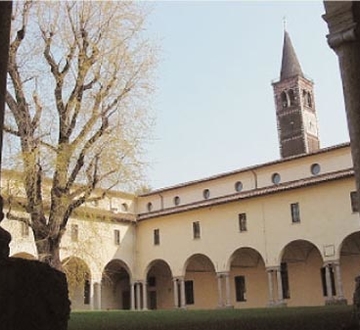Sant'Eustorgio’s Cathedral in Milan
Piazza Sant'Eustorgio, 1 20123 Milano

Opening hours:
10:00 to 18:00 (closed on Mondays)
Info:
Tel 02 58101583
parrocchia@santeustorgio.it
www.santeustorgio.it
Restoration works
Dated back to early Middle Ages, Sant'Eustorgio is the result of various important historical stratifications. We would like to mention here the restoration works carried out in recent years on the parts built between '400 and '500, which, besides the impressive size of the Romanesque Church, characterize the entire building. The most evident and best known element of this historical period is the Portinari Chapel, the first example in Milan where the language of the Renaissance, of Tuscan origin, confront itself with the Romanesque-Gothic style.
The complex interventions faced different aspects relating to conservation of the rich frescoes decorations attributed to Foppa, and of the original terracotta ornaments. Outside, interventions involved almost a unique theme, bound to the preservation of the masonry surfaces, with their molded brick cornices substantially unchanged, except for the discovery of "graffiti" on the external part of the dome.
The building includes two major sixteenth-century cloisters, one of which (the northern cloister, now hosting the Diocesan Museum) was partially destroyed by bombing during the Second World War and, for this reason and for the new destination as an exhibit venue, subjected to considerable consolidation and static restoration works. The cloister adjacent to the church, where the Chapter House overlooks, has also undergone restoration interventions in its external surfaces, thus bringing to light decorations of late sixteenth century.
By Libero Corrieri
Areas of intervention
Portinari Chapel - Interiors >>
Cathedral Cloister >>
Northern Cloister - Diocesan Museum >>
Chapter House >>
Southern side >>

















